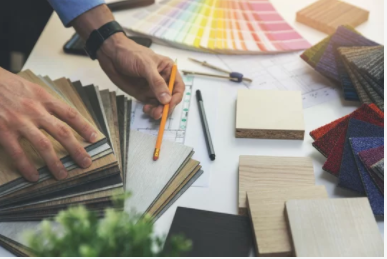

“Beautiful places are almost alive!
When you visit them, you can feel their breaths!”
Designing an interior space is creating beauty; it is filling a space with a functional and aesthetically pleasing piece of art.
The trend of interior design had existed for a long time and probably emerged when man began to lead a settled life and began living in closed spaces. But, of course, there was no professional Fashion Designer to execute the plans, and it was mainly the duty of the woman of the house.
As time went by, the interior designs began to look more uniform. A particular geographical location would exhibit similar interior designs. Eventually, each form of interior design became a discipline of its own, and today interior design has emerged as one of the most reputable careers in the modern world. At JD Institute Of Fashion Technology, we made it simpler for you to understand the process and read ahead to get a clear vision in your mind.
Whether you are a professional fashion designer or just an enthusiast of home decor, you have the option to choose a style or style that would reflect you well or one that will please your client.
Below is a comprehensive list of interior designs that an interior Fashion Designer can refer to and be inspired to create her own unique and aesthetic interior designs.
The bohemian interior design is a perfect blend of colours and a very relaxed and eclectic look. This type of look seeks to portray the mood of the vagabonds, and hence they are a mixture of contemporary and rustic. Their furniture is decorated with intricately patterned cushions, and even their lights are different and unique. The bohemian house is fond of pendant lights, lamps with fringes and chandeliers with hanging crystals.
A fashion designer pursuing a course in contemporary interior design will learn that a contemporary design is somewhat similar to the modern look but has a little twist. The contemporary design also features an eclectic look, apart from the contemporary look. They also present elements of minimalism. Here, you won’t find fringes or tassels. Instead, the furniture will be sleek with detailed moulding.
Unlike the thick and heavy designs of the contemporary style, the cottage interior design is cosy and airy. To reflect the mood of a cottage in the countryside, a fashion designer has to incorporate lightweight materials such as lace or cotton as drapes. Pastel colours are a recommended choice for this type of interior design. This form of interior design is much similar to country-style interiors.
This form of interior design is a mixture of various styles, such as the bohemian, the contemporary, and the modern. For example, their furniture might be a combination of a boho rug paired with a classic leather couch along with fairy lights or pendant lights. In addition, sculptures, vases and dinnerware, both modern and vintage, are a common sighting in an eclectic home.
The traditional English interior design features floor-length drapes that are floral in their pattern, a wall to ceiling library, a four-poster bed along with a bedside footstool and long couches either of wood and fabric or high-quality leather. A fashion designer pursuing a fashion designing course would know that an English home must evoke a traditional and classy feel.
A student of a fashion designing course is well aware of the intricacies associated with French interior design. The french design is refined, ornate, sophisticated and charmingly elegant. Gold and silver are often used to design the interior in wall decor, cabinets, faucets and other such details. The furniture has a glossy finished look, and the house is further adorned by antiques, giving the french home a vintage look.
The Indian Interior presents an exotic look, rich in colours and various textures. The furniture will be handcrafted and well carved from a solid wood block. The most common timber used is usually rosewood, mahogany, ebony, sal and teak. In many Indian homes, one will witness the traditional Jhoola or the swing at the centre of the house. Moreover, the fabric will combine colours ranging from bright red to pale green. Cotton, silk and jute are standard fabrics that an Indian fashion designer must work with.
When the client tells the fashion designer that they want a Japanese-inspired look, they are looking for a home space that is soft and serene. A Japanese home is very similar to a minimalist home as the main priority is decluttering of spaces. Sliding doors are a characteristic feature of such homes. The furniture is usually square or rectangular, lying quite low. You will often find Bonsai plants in and around the house.
A fashion designing course will allow a fashion designer to work on an urban interior look. The urban look is rustic, pleasant and designed to feel highly functional. Adorned with the latest styles, such as copper and steel designs and pendant lights, are a characteristic feature of urban homes. The furniture may not always have the traditional shapes, and the colours are perfect hues of blues and greens. White couches are also another characteristic feature of urban homes.
These are some of the best and most popular interior designs that you can master in a fashion designing course as a fashion designer.